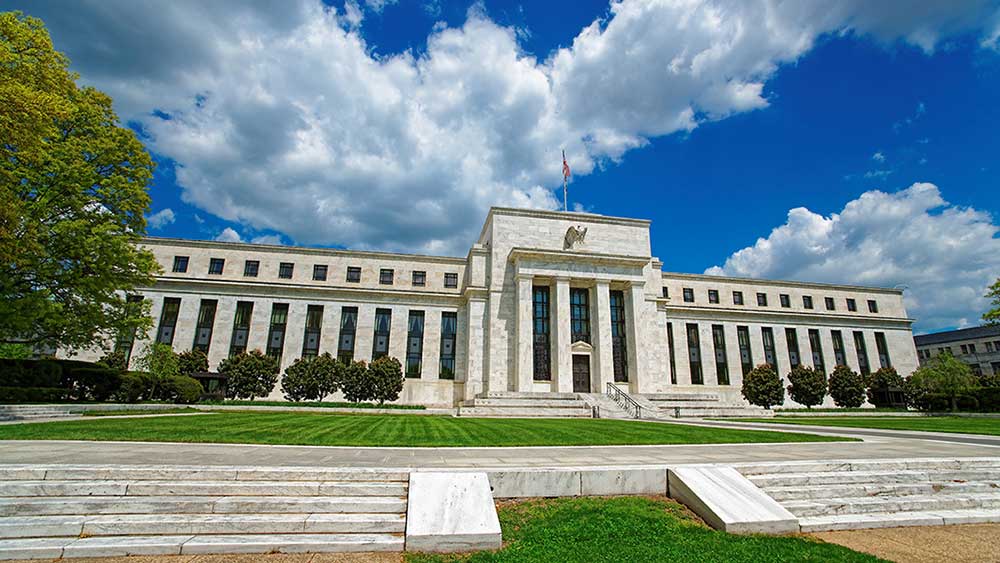Wall Street has already had its freakout about how high the Federal Reserve will raise interest rates — including an all-but-certain 75-basis-point hike on Wednesday. The unexpectedly hot August CPI report sent the S&P 500 tumbling 4.8% last week, while the 10-year Treasury yield hit its highest level since 2011. That setup has left the Fed with a pretty straightforward decision on Wednesday: Either confirm the bad news markets are coming to terms with, or give the S&P 500 reason to rally.
X
That shouldn’t be a hard call. The Fed can’t afford to allow anything like a replay of the summer rally, which saw the S&P 500 rise 17% off its lows and the 10-year Treasury yield tumble from nearly 3.5% to 2.6%. That easing of financial conditions reversed much of the Fed’s tightening work during the spring.
The cost of that reversal became all too clear with last week’s CPI report: A far-too-strong job market is still keeping inflation way too high. While the overall inflation rate eased to 8.3%, prices for core services, such as rent, health care and transportation, rose 0.6% on the month and 6.1% from a year ago, the fastest pace since February 1991.
Fed Policy: Tighter For Longer
The summer rally had already begun to come undone on Aug. 26, when Fed chief Jerome Powell, in his Jackson Hole, Wyo., speech, ditched his earlier optimism that the U.S. economy could skirt recession. Instead, Powell signaled that the Fed will keep policy tighter for longer, grounding the economy so that the current inflation outbreak doesn’t turn into a chronic 1970s-style disaster.
Powell’s speech began a market repricing of the Fed policy outlook, undoing the dovish impression he gave with his July 27 news conference that had helped the S&P 500 cut its 24% loss by more than half, exiting a bear market.
August’s hot CPI reading provided another major jolt. Now markets are pricing in a third-straight 75-basis-point rate hike on Wednesday, then a fourth on Nov. 2. Markets also see better-than-even odds of a half-point hike on Dec. 14.
Federal Reserve’s Terminal Rate
Adding it all up, markets expect the Federal Reserve’s key policy rate to end this year with a target range of either 4%-4.25% or, a bit more likely, 4.25%-4.5%. And that may not be all. Odds have nosed above 50% for one further quarter-point hike to a range of 4.5%-4.75% next March or May, according to CME Group’s FedWatch page.
Here’s why market expectations for the peak Fed rate of the cycle, or terminal rate, are so important for this week’s Fed meeting. Beyond adjusting the current policy setting, Fed committee members will reveal new projections for the rate-hike outlook over the next few years.
“Showing a below-market terminal rate would lead to an easing in financial conditions, which would be counterproductive to the Fed’s goal of reducing demand,” wrote Jefferies chief financial economist Aneta Markowska in a Friday note.
She expects the new quarterly projections will show the benchmark federal funds rate ending 2023 with a target range of 4.25%-4.5%.
Will Fed Projections Show A Recession?
A secondary question is whether the Fed will continue to at least implicitly embrace a soft-landing scenario. The last batch of projections in June, though not quite as rosy as those in March, suggested that inflation could be whipped with little pain. The U.S. economy was still seen growing 1.7% in 2023, just a hair below the long-term trend, as unemployment edged up to 3.9%. New projections might show growth closer to the flatline and unemployment rising above 4% next year. Even so, the Fed is unlikely to cut rates next year.
That was the message of Powell’s Jackson Hole speech. Even if the jobless rate rises and the economy faces recession, the Fed won’t cut until inflation is heading back down to 2% in a convincing way. The Fed is being guided by the experience of the 1970s, when policymakers repeatedly cut rates as unemployment rose, only to see inflation reignite.
S&P 500 Bear Market Looming
If there’s good news for the S&P 500, it’s that the rate-hike shock is already getting priced in. While the hawkish tone of the Fed meeting policy statement and new projections will keep the bulls caged, a washout may be avoided. But the S&P 500 may still grind lower as the economy and earnings outlook weaken, so a return to bear market territory is likely. There’s a good chance that the S&P 500 will retest its June lows, so investors will need to exercise patience.
After Tuesday’s 1.1% loss, the S&P 500 stood 19.6% below its Jan. 3 all-time closing high, though still 5.2% above its June 16 closing low. The Dow Jones Industrial Average has fallen 16.6% from its peak close, leaving it just 2.7% above June’s 52-week closing low. The Nasdaq composite has tumbled 29.85% from its record closing high but remains 7.3% off its June bottom.
Be sure to read IBD’s The Big Picture column after each trading day to get the latest on the prevailing stock market trend and what it means for your trading decisions.
YOU MAY ALSO LIKE:
Stock Market Today: How To Handle The Latest Correction
Join IBD Live And Learn Top Chart-Reading And Trading Techniques From The Pros
Image and article originally from www.investors.com. Read the original article here.

